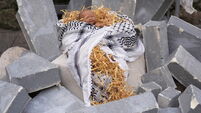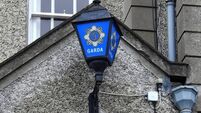Special report: The Summer that saved Irish Tourism
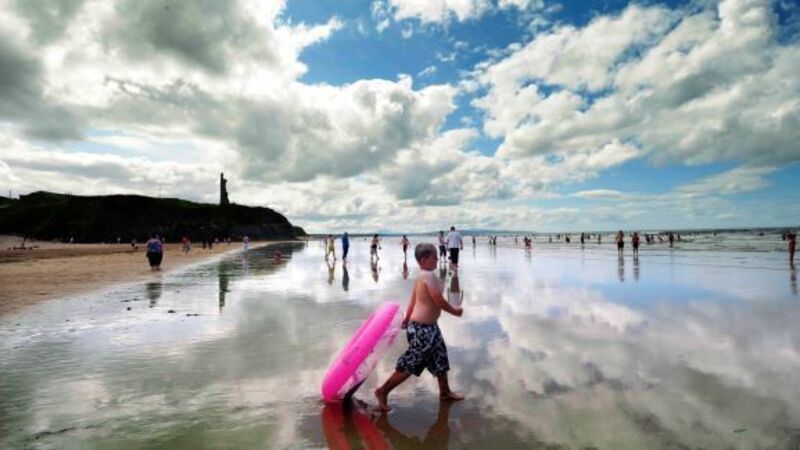
“Irish home-holidaymakers are very weather dependent and traditionally will book their breaks at the last minute,” said Shaun Quinn, CEO of Fáilte Ireland.
“If a summer is bad, we will usually see a last-minute dash to traditional Mediterranean sunspots. With the good weather this year, there was instead a rush to traditional Irish holiday spots. Galway City, Westport, Killarney, Dingle, West Cork, and Clare are among the places that have seen a boost in Irish holidaymakers.”
Figures released by the CSO this month showed Ireland also benefited from a spike in incoming trips, with a 7.6% increase for the May to July period. The total number of trips to Ireland was 2,084,600 for the period — an overall increase of 146,800 compared to the same period 12 months earlier.
Traffic from North America increased by 20.5%, with numbers from the EU up by 5.1%. Visits from Britain also increased by 3.3%.
Niall Gibbons, CEO of Tourism Ireland, particularly welcomed the growth in visitor numbers from North America — a record performance from that market.
“We are on course to achieve our best year ever from the United States, even surpassing the previous best year of 2007,” he said.
Tourism is Ireland’s largestindigenous industry, responsible for over 4% of GNP and employing up to 200,000 people. 2012 saw an estimated 7.27m overseas visitorsarriving in the country, delivering revenues of €3.51bn. Overseas tourism accounts for 59% of total revenue. “This year we will welcome over 1m American visitors, spending about $1bn. We are also seeing a record year from our long-haul markets, with Australia and New Zealand in particular driving that growth.”
With the upcoming September to December period traditionally yielding up to 30% of overseas tourism business, 2013 is poised to deliver a visitor bonanza to an industry still grappling with five years of extremely challenging economics. Even before the advent of this year’s good summer weather, the portents for an increase in tourism were already in place.
Confidence amongst hoteliers and tour agents was already high at the beginning of the year, partly due to advance bookings from the US and further proof that the American market was again on an upswing.
This optimism was also helped by the fact that last year, for the first time since the start of the downturn in 2008, the numbers employed in tourism rose and overseas revenue increased by up to €100m.
The sector has also been boosted by The Gathering — the biggest tourism initiative undertaken by the State and which coloured much of the overseas reporting of Ireland as a destination for this year.
The influential Global Traveller listed Ireland as its Best Tourism Destination, with The Gathering named as must-see event for this year. A high-profile listing in Fodor’s Travel Go List of the top 25 places to visit in 2013 also cited The Gathering as one of the main reasons to visit this year. As always, value for money ranked highly amongst visitor demands — an area where Ireland has also shown positive change in recent years. Research conducted among holidaymakers during 2012 indicated greater satisfaction levels with 84% expressing a positive response to the value on offer.
In the eurozone, satisfaction levels with value for money were highest amongst Italian and French visitors, backed up by the positive ratings of an increasing proportion of British visitors.
“Looking back to the darkest days of 2009 and 2010, it is clear that we are entering a new phase of our recovery,” said Fáilte Ireland chairman Redmond O’Donoghue.
“Moving from mere survival, tourism businesses are now consolidating and looking everywhere they can for growth opportunities. While the home holiday market will always remain important, the best prospects are overseas.”
An estimated 10,000 Chinese visitors come to Ireland each year — a market Tourism Ireland believes has the potential to grow much larger given China’s strong economy and growing population, which includes over 500,000 high net worth individuals.
Chinese visitors coming to the UK can now include Ireland in their itinerary through a more efficient visa waiver scheme introduced by the Government last year, cutting out the bureaucracy and cost of applying for a separate visa. A number of leading Chinese tour operators have subsequently included Ireland programmes in their brochures for the first time as a result of the waiver scheme. Spend by Chinese travellers has risen four-fold in the past decade, making them the fourth-biggest spending tourists in the world.
The warmth and sincerity of the Irish people hits a very positive note with Chinese visitors, said Fiona O’Sullivan of Custom Ireland, which organises tailor-made travel itineraries.
“Despite the language difficulties, they clearly love interacting with Irish people on every level. They feel a genuine connection and are very happy and comfortable with Irish people. The welcome and the scenery are, without a doubt, amongst the top things they loved on their visit.”
The UN World Tourism Organisation has indicated that travel expenditure by the Chinese was almost €50bn in 2010. With 2m Chinese people visiting Europe each year, this is a significant emerging market for Ireland to tap into. Irish hotels are aware of the potential of this vast market and are already taking steps to capitalise on its opportunities.
“The number of outbound visitors from China in 2010 was over 57 million, so converting just a handful of that would be enormous,” said Paula Cogan, director of sales and marketing at Cork’s River Lee Hotel, which saw a 150% increase in Chinese visitors in 2011. Along with golf, historic sites, and castles, Chinese visitors are keen shoppers — with the emphasis on brand name goods. “They love to shop, specifically for luxury goods,” said Ms Cogan.
“In many countries, such as Switzerland, hotels and retailers work together, and some shops will subsidise accommodation costs just to get Chinese visitors to spend on luxury goods.”
She has travelled to China on marketing trips and notes a growing awareness in the perception of Ireland among many travel agents.
“Travel agents understand Ireland as a high value destination offering golf, good food, and quality hotels, and are now showcasing it to the new wealthy Chinese travellers. Riverdance is loved in China and this has really helped to showcase Ireland.” Cost is a factor, but Chinese visitors are happy to pay for a quality experience. “They find Ireland to be about on par with France and Italy as regards price, and it would be considered an expensive destination,” said Ms O’Sullivan of Custom Ireland.
“Many tour operators would look at Ireland as a location for business tourism, with golf and castles as add-on activities. The market would definitely be high end professionals, with four and five-star hotels, and interest in places like the Guinness Storehouse, Johnny Fox’s Pub, Trinity College, the Cliffs of Moher, Muckross House, and Dromoland Castle.”
While China is a vast market with massive potential, it requires a careful promotional approach.
“It is a big challenge culturally to market Ireland in China, as opposed to North America, for instance, where within two steps the traveller will know a neighbour or colleague who’s already been here. For Chinese people, Ireland as a destination is completely new.”
Ireland has been voted fourth in a list of dream destinations by the readers of an influential travel magazine in the United States.
Readers of Virtuoso Life took part in a ‘Travel Dreams’ survey — to reveal their ideal destination, travel experience and ultimate trip of a lifetime.
Australia, Italy and New Zealand took the top three slots in the survey — with Ireland next ahead of France, South Africa, the Caribbean, Greece, England and French Polynesia. Last year, Ireland came in at number nine in the same survey.
Virtuoso is a by-invitation-only network of over 330 travel agents specialising in luxury travel, and the network’s magazine, Virtuoso Life, published six times a year, is distributed to the homes of 200,000 affluent travellers and top clients of the Virtuoso travel agents.
Readers of the prestigious Condé Nast Traveler magazine have voted Kilkenny as the 9th friendliest city in the world this year. Dublin was placed 12th with Cork coming in 20th.
Only one other European city — Edinburgh at 18th — made the top 20. The Condé Nast survey, based on the views of more than 46,000 of the magazine’s readers, praised Kilkenny’s clean air and traditional pubs.
“People were always greeting you,” one reader commented, while another praised the “charming” locals, describing them as “proud folks who want you to sample their best”. According to the survey, Cork is a “warm city, like a beautiful gem” and Dublin is said to be a “big bustling city with great museums” that “should be on everyone’s bucket list” of places to visit before they die.
Tourism Ireland has described American Vogue’s decision to shoot part of its iconic September issue in Kerry as “invaluable publicity”. Photographed by Annie Lei bovitz, the nine-page fashion spread is entitled ‘Wild Irish Rose’, and features Daria Werbowy, the Polish-born Ukrainian model who lives part of the year in West Cork.
Werbowy is paired with Girls TV show actor Adam Driver in a shoot featuring well-known Kerry locations including the Killarney Lakes, Ladies View and Gleninchaquin Falls near Kenmare. Vogue fashion editor Grace Coddington, said she “fell in love with Ireland” when she visited Werbowy at her home in West Cork earlier this year.
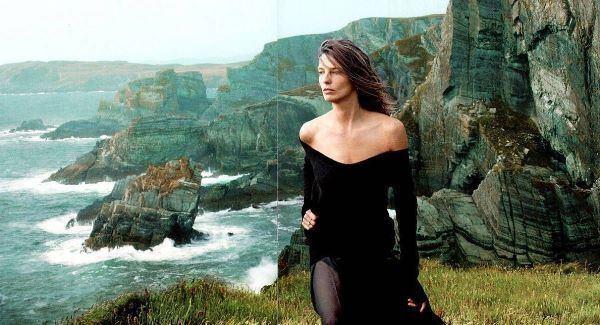
The first six months of 2013 saw 114 major international business events happening across the country, bringing a total of 31,000 delegates with an estimated economic impact of €37 million.
Conferencing is big business with the value of a business visitor between two to three times that of a leisure tourist.
In addition, they generally arrive a few days before the event and stay on longer afterwards. In 2012, the average number of nights spent in Ireland by business delegates was six nights, up from five in 2011.
Business operators in the conference sector have reported a “Gathering bonus” in regard to the number of delegates attending conferences this year, many of whom elected to prolong their stay by up to a week. With business visitors spending more than the average tourist, this is another lucrative sector for the industry.
To capitalise on the potential, Fáilte Ireland has recruited a team of ‘conference ambassadors’ from all sectors of Irish business and professional life in their bids to win top international events to the country.
At the G8 Summit in Fermanagh this summer, it used the global attention to highlight Ireland as the ideal venue for conferences with an advertising campaign in print media and a dedicated ‘Meet in Ireland’ website.
Since the start of the programme in 2009, the team has identified and recruited 447 ‘conference ambassadors’ whose efforts have so far netted conferences worth €138 million.
“This Conference Ambassador programme is now really producing the goods with eight out of the top 10 conferences having been secured via the programme,” said John Concannon, director of marketing with Fáilte Ireland.
“Looking ahead to the second half of the year, the news is even better and, looking at the order books, we are expecting the next six months to bring even greater results.”
Ireland has long been a favoured location for Hollywood films, going back to Ryan’s Daughter, Far & Away and Saving Private Ryan, but the potential from Indian cinema — Bollywood — is increasingly becoming the focus of Irish tourism initiatives.
Last month, a number of influential producers and directors from the Bollywood industry base in Bombay arrived in Ireland to explore potential locations and scenic spots for upcoming Bollywood blockbusters. The filmmakers included Kulmeet Makkar of the Film and Television Producers Guild of India; Vikesh Bhutani of Excel Entertainment; Sarita Patil from Balaji Telefilms; Mitali Mahajan of Ashutosh Gowariker Productions Pvt Ltd; and Amar Butala, UTV Motion Pictures, the film unit of Disney-UTV.
Over the course of a week-long visit, the party visited St Stephen’s Green, Dublin Castle, Trinity College, Temple Bar and the Ha’penny Bridge. Around the country, they checked out Ashford Castle, the Cliffs of Moher, Kenmare and the Dingle Peninsula.
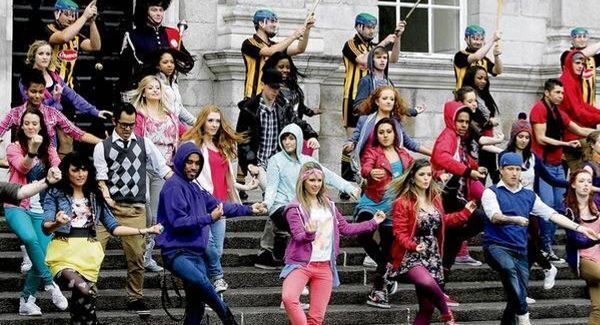
Last year, the Bollywood film shot on location in Dublin — Ek Tha Tiger — became one of the biggest-grossing movies ever in India and was seen by an estimated 100 million cinema-goers.
Tourism Ireland is confident that the huge popularity of Bollywood films can deliver real benefits for tourism, with films shot here helping to significantly boost awareness of Ireland among India’s growing middle classes, keen to sample vacations in Europe.
“Bollywood is deep-rooted in the psyche of most Indians and in Indian communities across the world, and the films have a considerable influence on Indian travellers when they are deciding on their holiday destination,” said Tourism Ireland chief executive Niall Gibbons.
“Films shot on location here, like Ek Tha Tiger, are really influential, helping to increase awareness of Ireland, to whet appetites among Indian travellers who are always on the lookout for new destinations and create a curiosity to come and visit the places where the film was shot.”
Additionally, Ireland was named ‘Best Emerging Destination’ for 2013 at a high profile awards ceremony in India organised by Lonely Planet magazine earlier this year.
A jury of travel experts short-listed popular destinations for Indian travellers in its January edition and readers were invited to name their favourite. Ireland beat off strong competition from Canada, Oman, Croatia, Vietnam and Fiji. The award was presented to Tourism Ireland by John Abraham, a renowned Indian actor.
The Guinness Storehouse topped the bill as Ireland’s most popular entry fee attraction for a second year running, growing its visitor numbers by almost 6% to 1,087,209.
It was followed closely by Dublin Zoo and the Cliffs of Moher Experience.
The National Aquatic Centre attracted 813,406 visitors, while 561,259 visited Trinity College to see the Book of Kells.
The National Gallery of Ireland continued its dominance of the free attractions list, recording more than 660,000 visitors last year. It was followed by the National Botanic Gardens and the National Museum. The Science Gallery at Trinity College also made the list.
Ireland’s culture and history is a major appeal for overseas holiday-makers, 91% listing it as an important factor in their decision to come here. Significantly, 94% said they were satisfied with their experience of Ireland’s history and culture.
For many tourists, the primary point of access to Ireland’s heritage is through major attractions, with more than 2m overseas holiday-makers each year visiting sites of historical or cultural interest.
Meanwhile, the Holidaymaker 2012 survey threw up insights into what works in different tourism locations:
*Hotels are the most popular choice of accommodation in most destinations, but B&Bs are most popular in Dingle;
*Hiking and walking are the most popular activities for visitors to the south and north -west, while museums and galleries come out top for visitors to Dublin;
*Dublin, Galway and Mayo are popular choices for 19 to 24-year-olds, while the Ring of Kerry and West Cork are more popular with visitors over 65;
*Galway/Mayo, the Ring of Kerry, and Dingle are popular with couples, while Cork and the south-east are favoured by those with families.
*1. Guinness Storehouse in Dublin — 1,087,209
*2. Dublin Zoo — 1,029,417
*3. Cliffs of Moher, Co Clare — 873,988
*4. National Aquatic Centre, Dublin — 813,406
*5. Book of Kells, Trinity College, Dublin — 561,259
*1. National Gallery of Ireland — 60,486
*2. National Botanic Gardens — 544,685
*3. National Museum of Ireland — 409,275
*4. Farmleigh — 375,064
*5. Science Gallery, Trinity College — 302,171








